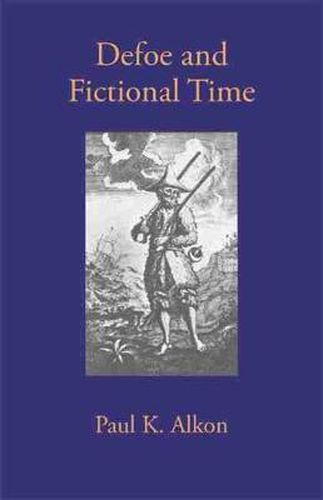Readings Newsletter
Become a Readings Member to make your shopping experience even easier.
Sign in or sign up for free!
You’re not far away from qualifying for FREE standard shipping within Australia
You’ve qualified for FREE standard shipping within Australia
The cart is loading…






Defoe and Fictional Time shows Defoe’s relevance to issues now central to criticism of the novel; relationships between narrative time and clock time, the influence of time concepts shared by writers and their audience, and above all the questions of how fiction shapes the phenomenal time of reading. Paul K. Alkon offers first a study of time in Defoe’s fiction, with glances at Richardson, Fielding, and Sterne; and second a theoretical discussion of time in fiction. Arguing that eighteenth-century views of history account for the strange chronologies in Captain Singleton, Colonel Jack, Moll Flanders, and Roxana, Alkon explores Defoe’s innovative use of narrative sequences, frequency, spatial form, chronology, settings, tempo, and the reader’s cumulative memories of a text. Defoe’s Journal of the Plague Year is the first portrayal of a public duration-passing time shared by an entire population during a crisis-ranking Defoe among the most creative writers who have explored the way in which fictional time may influence reading time.
$9.00 standard shipping within Australia
FREE standard shipping within Australia for orders over $100.00
Express & International shipping calculated at checkout
Defoe and Fictional Time shows Defoe’s relevance to issues now central to criticism of the novel; relationships between narrative time and clock time, the influence of time concepts shared by writers and their audience, and above all the questions of how fiction shapes the phenomenal time of reading. Paul K. Alkon offers first a study of time in Defoe’s fiction, with glances at Richardson, Fielding, and Sterne; and second a theoretical discussion of time in fiction. Arguing that eighteenth-century views of history account for the strange chronologies in Captain Singleton, Colonel Jack, Moll Flanders, and Roxana, Alkon explores Defoe’s innovative use of narrative sequences, frequency, spatial form, chronology, settings, tempo, and the reader’s cumulative memories of a text. Defoe’s Journal of the Plague Year is the first portrayal of a public duration-passing time shared by an entire population during a crisis-ranking Defoe among the most creative writers who have explored the way in which fictional time may influence reading time.